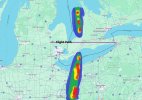hindsight2020
Final Approach
- Joined
- Apr 3, 2010
- Messages
- 7,054
- Display Name
Display name:
hindsight2020
It also depends on how you represent the conveyance to said spouse/kids/friends. In a lawnmower it's easy to have an all-weather claim falsified/laughed out the building by any pedestrian, but when you start stepping up in moola to private airline cosplayers, that's when people get enough rope length to hang themselves with. I do agree with the prior comment about the airline experience largely desensitizes modern people to the fatality risk of hurling yourself through the sky with convective air masses in and around you.
The economic angle is the inflection point imo. The more stupid money you're capable (and willing) to sink into it, the more pressure there is to seek some validation/ROI out of it. I find that reflex quite rational really. So there's more pressure for the turboprop to "deliver" than the lawnmower. Add in the already imprudent (to me) affair of recreational single pilot IMC airline cosplaying, and yeah you're gonna start stacking up affluent caskets in short order. And we all eat the externalization of that cost, via insurance cost shifting. In fairness, that [externalizing] dynamic is not unique to recreational aviation.
The economic angle is the inflection point imo. The more stupid money you're capable (and willing) to sink into it, the more pressure there is to seek some validation/ROI out of it. I find that reflex quite rational really. So there's more pressure for the turboprop to "deliver" than the lawnmower. Add in the already imprudent (to me) affair of recreational single pilot IMC airline cosplaying, and yeah you're gonna start stacking up affluent caskets in short order. And we all eat the externalization of that cost, via insurance cost shifting. In fairness, that [externalizing] dynamic is not unique to recreational aviation.

